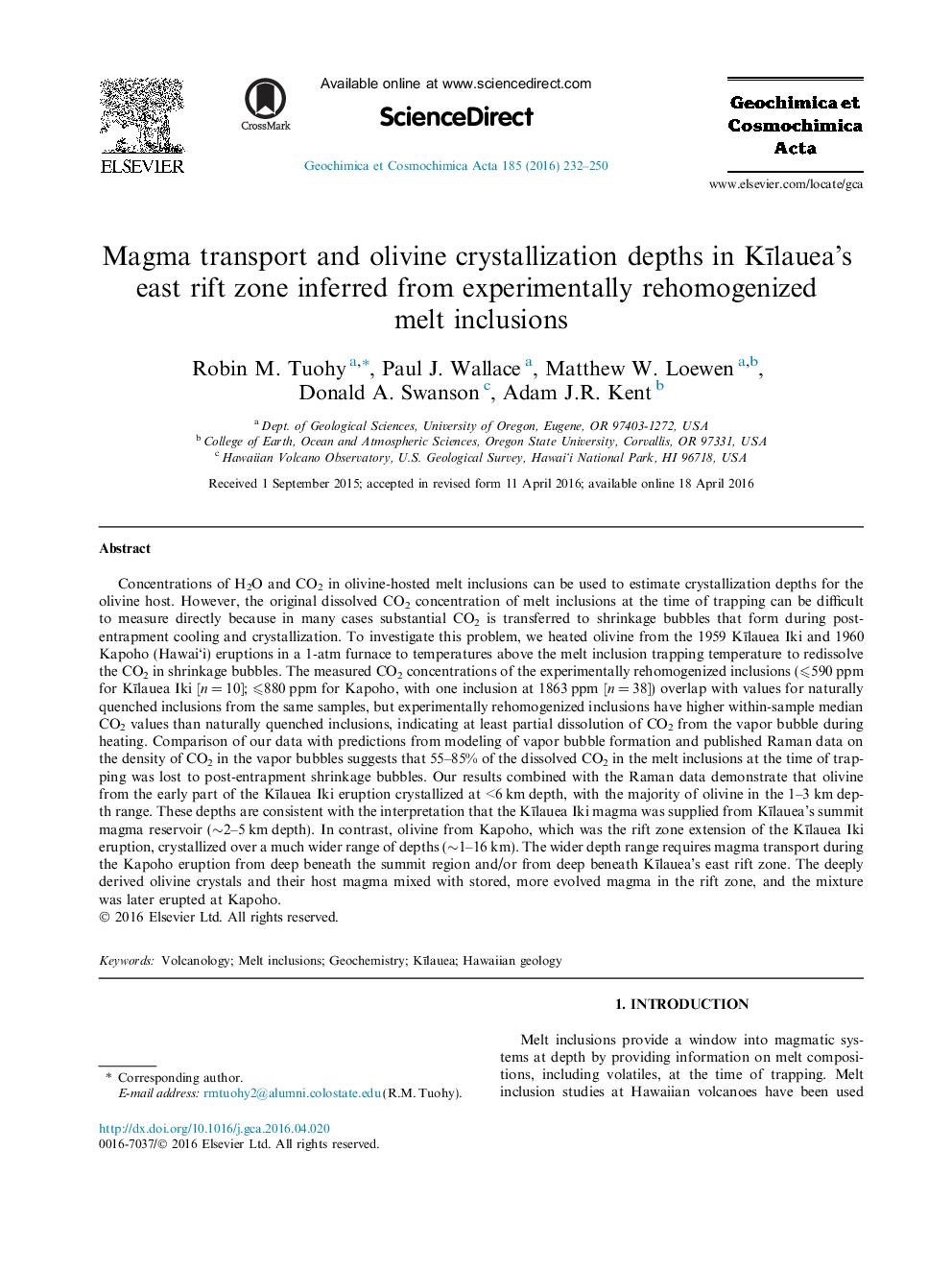| کد مقاله | کد نشریه | سال انتشار | مقاله انگلیسی | نسخه تمام متن |
|---|---|---|---|---|
| 6437365 | 1637972 | 2016 | 19 صفحه PDF | دانلود رایگان |

Concentrations of H2O and CO2 in olivine-hosted melt inclusions can be used to estimate crystallization depths for the olivine host. However, the original dissolved CO2 concentration of melt inclusions at the time of trapping can be difficult to measure directly because in many cases substantial CO2 is transferred to shrinkage bubbles that form during post-entrapment cooling and crystallization. To investigate this problem, we heated olivine from the 1959 KÄ«lauea Iki and 1960 Kapoho (Hawai'i) eruptions in a 1-atm furnace to temperatures above the melt inclusion trapping temperature to redissolve the CO2 in shrinkage bubbles. The measured CO2 concentrations of the experimentally rehomogenized inclusions (⩽590 ppm for KÄ«lauea Iki [n = 10]; ⩽880 ppm for Kapoho, with one inclusion at 1863 ppm [n = 38]) overlap with values for naturally quenched inclusions from the same samples, but experimentally rehomogenized inclusions have higher within-sample median CO2 values than naturally quenched inclusions, indicating at least partial dissolution of CO2 from the vapor bubble during heating. Comparison of our data with predictions from modeling of vapor bubble formation and published Raman data on the density of CO2 in the vapor bubbles suggests that 55-85% of the dissolved CO2 in the melt inclusions at the time of trapping was lost to post-entrapment shrinkage bubbles. Our results combined with the Raman data demonstrate that olivine from the early part of the KÄ«lauea Iki eruption crystallized at <6 km depth, with the majority of olivine in the 1-3 km depth range. These depths are consistent with the interpretation that the KÄ«lauea Iki magma was supplied from KÄ«lauea's summit magma reservoir (â¼2-5 km depth). In contrast, olivine from Kapoho, which was the rift zone extension of the KÄ«lauea Iki eruption, crystallized over a much wider range of depths (â¼1-16 km). The wider depth range requires magma transport during the Kapoho eruption from deep beneath the summit region and/or from deep beneath KÄ«lauea's east rift zone. The deeply derived olivine crystals and their host magma mixed with stored, more evolved magma in the rift zone, and the mixture was later erupted at Kapoho.
Journal: Geochimica et Cosmochimica Acta - Volume 185, 15 July 2016, Pages 232-250